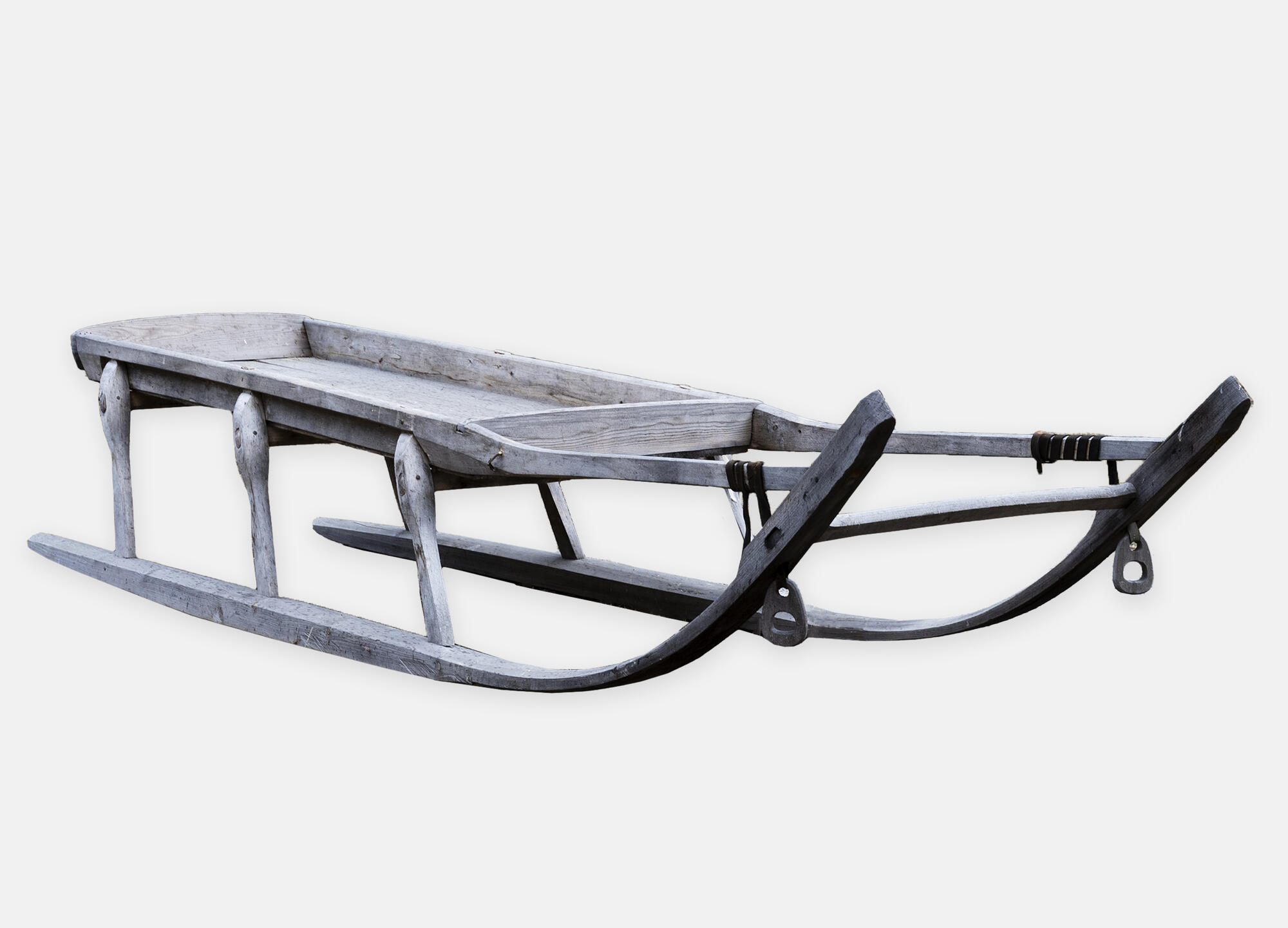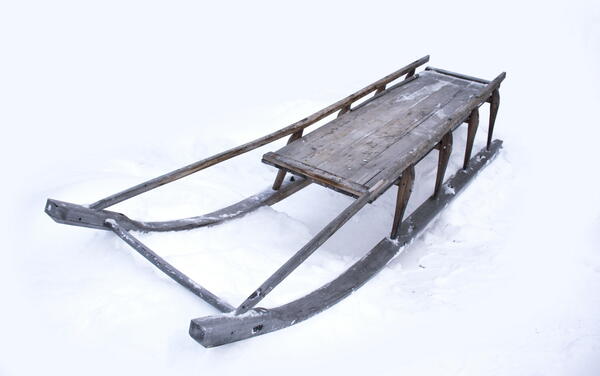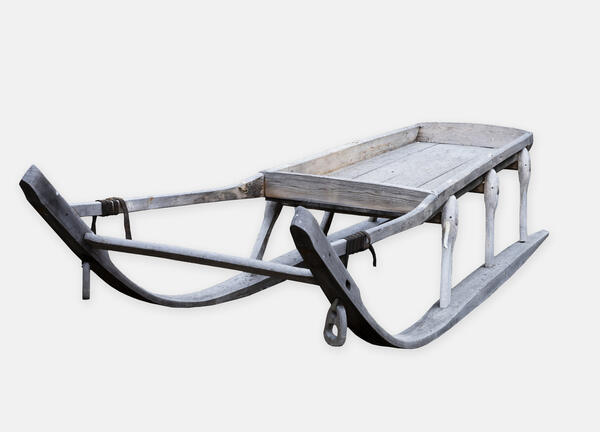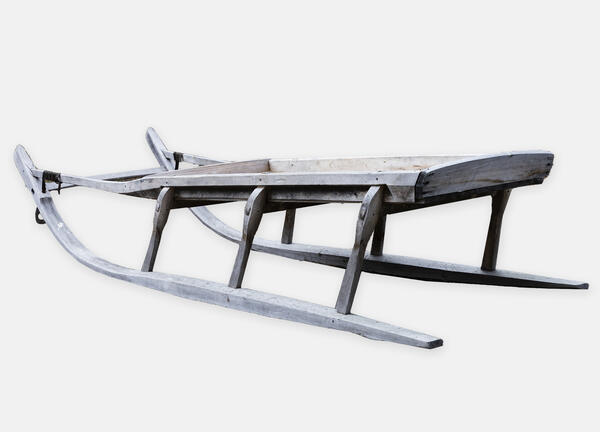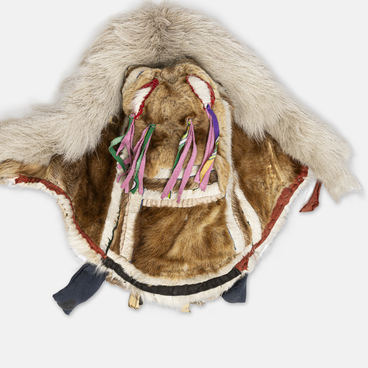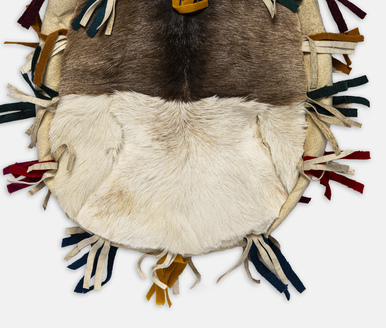The indigenous peoples of the North use a traditional sled with a simple and reliable design. Its main components are runners, stanchions, crossbars, and a cargo bed or seat. All the parts are made of wood and assembled without nails so that a reindeer herder can repair the sled without any additional tools while traveling or hunting.
Considering the conditions of the northern wilderness, a slight bend was added in the front part of the sled that can reach half of its length. Thanks to this design, the sled runs smoothly over any obstacle, including snow and vegetation. As a result, the sled’s heavy part runs along the formed tracks without breaking or tearing out plants.
The seat or cargo bed has a high clearance. This allows for faster movement and helps keep the cargo dry when crossing a swampy area and inaccessible to rodents during stops.
There are about ten types of sleds: men’s, women’s, and sacred sleds, as well as sleds for transporting stoves and houses. A racing sled can reach a speed of up to 35 kilometers per hour. It is used for hunting and for competitions during traditional festivals of reindeer herders.
Originally, sleds were pulled by hand, and later dogs and reindeer began to be harnessed to pull sleds. All kinds of sleds are still used by the northern peoples: during long journeys, a hunter can pull a hand sled over the shoulder, transporting supplies and equipment. A sled is pulled by either a single reindeer or a team of up to eight reindeer, depending on the season and the weight of the cargo. The average weight of a loaded sled should not exceed 200 kilograms.
When nomads travel to a new location, they combine
their sleds into a “train” called an “argish”. The leading sled in the train is
that of the head of the family, and the last one is a long sled carrying poles
of the portable house known as a “chum”. A train can include up to 15 sleds. The
lead deer is controlled using voice commands, reins, and a khorey. A khorey is
a pole with a length of around three meters and a round wooden or bone tip. It is
also used to test the strength of ice and, if necessary, to defend oneself while
traveling. Modern nomads often use snowmobiles instead of draft animals.
